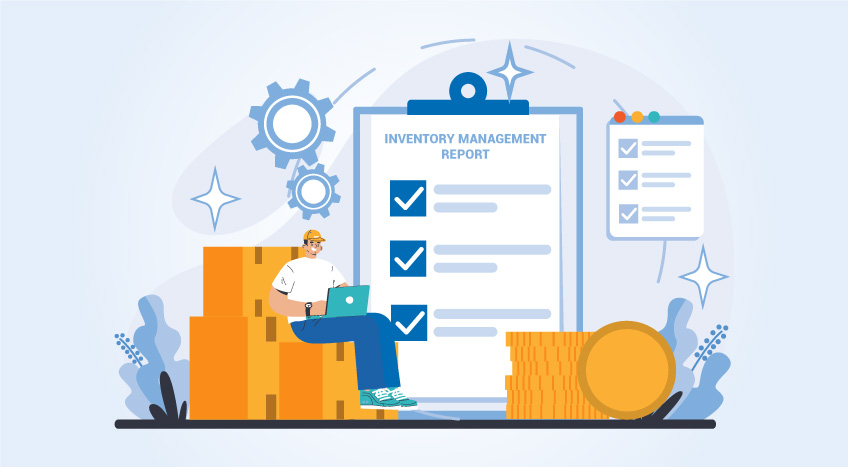Installing an inventory management software for your business is one thing, and knowing if it is improving overall business efficiency is another. You need to ensure the software is suited to your operation and manages the delegated tasks optimally. But how do you do that? This is where inventory management KPIs (Key Performance Indicator) come to use.
An inventory management KPI is a metric that helps you track your inventory management at different stages. It helps you make calculated decisions in matters such as inventory investments, forecasting demands, the procurement of inventory, inventory tracking and the like.
Here are the top 4 inventory management KPIs to track the profitability and overall efficiency of your business. These are broad headings, and under each, you will find many small KPIs that play an important role.
Sales KPIs
Discussed below are some of the most important inventory management KPIs that help monitor and improve your sales:
- Inventory turnover ratio – This helps you check the number of times you keep buying and replenishing your stock within a time frame, say one year. It helps you draw a relation between your inventory levels and sales.
| Inventory Turnover Ration = Cost of Goods Sold/ Average Inventory. |
- Stock to sales ratio – This helps you track the stock stored in warehouses and compare it with the sales.
| Stock to Sales Ration = Value of Inventory/Value of Sales. |
- Days or weeks on hand – This helps you measure the movement of inventory in comparison to the cost of sales for a day or a week.
| Days on Hand = Average Inventory for a Period/Average Sale for that Period |
| Weeks on Hand = (Average Inventory for a Period/Average Sale for that Period) * 52 |
Receiving KPIs
This inventory management KPI deals with receiving and handling the stock in warehouses. Some of the important metrics used here are:
- Time to receive – This calculates the speed at which a business brings in new stock and starts its sales process as well.
| Time to Receive = Time when stock is validated + Time when stock is added to warehouse records + Time when stock is prepared for storage |
- Put away time – This time measures the time taken by a business to stow/store/put away inventory. This measure needs to be minimal for the supply chain to be effective.
| Put Away Time = Total time taken by business to stow all the stock received |
- Supplier quality index – This inventory management KPI is an index to measures the overall performance of vendors based on the quality of goods they provide to the business.
| Supplier Quality Index = 45% of material quality + 10% of corrective action + 10% of prompt reply + 20% of delivery quality + 5% of quality systems + 10% of commercial posture. |
Operational KPIs
This category of inventory management KPI measures the internal performances and operations of a business. Some of these metrics include:
- Lost sales ratio – This compares the number of days a business faces a stock-out issue in relation to the expected sales of that particular product.
| Lost Sales Ratio = (No. of days of stock-out a product faces/365) * 100 |
- Perfect order rate – This measures the number of times a business delivers an order on time to customers without any issues.
| Perfect Order Rate = [(number of orders delivered on time/number of total orders) * (number of incomplete orders/numbers of total orders) *(number of damage-free orders/number of total orders) *(number of orders with accurate documentation/number of total orders)] * 100. |
Employee KPIs
These include inventory management KPI metrics that measure the overall productivity of employees working for a business. A few useful metrics in this category are:
- Labor cost per item – This measures the cost of labor spent by the business for one product. The formula for this metric is:
| Labor cost per item = No, of total units / Total labor expenses |
- Labor cost per hour – This inventory management KPI helps businesses understand how much they spend on their workers per hour. The formula for this metric is:
| Labor cost per hour = Total gross salary of an employee per year/Net hours worked in a year |
Bottom Line
As you can see, an inventory management KPI is an important metric for businesses to understand where they stand at different stages in the supply chain. We have covered only a few basic KPIs in this blog to give you an understanding of the different metrics that businesses can use to determine their efficiency.
Choosing and keeping track of the right inventory management KPI can not only improve the profitability of a business, but it can also help improve its reputation and have better control over its operational costs.










